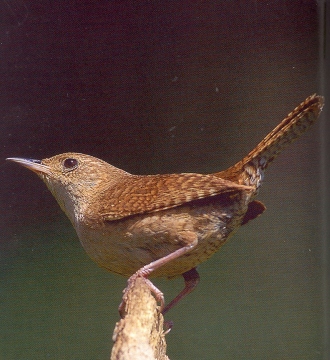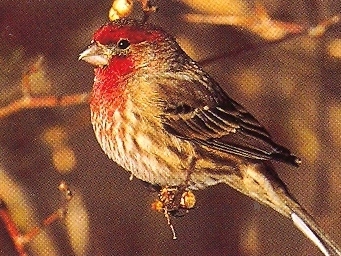|
Small
wren, with brown head, nape,
and back showing very fine dark brown bars, faint white eyebrows,
and gray-brown underparts with fine brown bars
on flanks and below tail. Wings and tail are brown with darker bars.
Bill is thin and slightly decurved.

|
HOUSE
WREN
Troglodytes aedon
PASSERIFORMES
Wrens (Troglodytidae)
Range and Habitat
Breeds from southern Canada southward to central California, central
New Mexico, northern Arkansas, and northern Georgia. Other forms are
found from Mexico southward throughout South America and the West Indies.
Spends winters in the southern U.S. and Mexico, from California, Texas,
and central Arkansas, to southern Maryland and southward to the Gulf
coast and throughout Florida. Preferred habitats include open woodlands,
forest edges, forest openings, shrubby areas, farmlands, orchards, residential
areas, and suburban parks.
SOUND: "cheh-cheh"

House Wrens are fiercely territorial, they have been known to destroy
bluebird and other cavity nester's eggs by piercing them, and then often
removing the eggs from the nest.
There have been occasional reports of House Wrens killing young nestlings
(4-5 days old) or throwing them out of the nest.
House Wrens live up to 7 years in the wild.
A group of wrens has many collective nouns, including a "chime",
"flight", "flock", and "herd" of wrens.
The House Wren has a current rating of Least Concern. The previous rating
for the House Wren was Lower Risk. The Lower Risk rating was downgraded
to a Least Concern rating as a result of the population and range of
the House Wren. The range of the House Wren is estimated to be about
25 million kilometers.

|